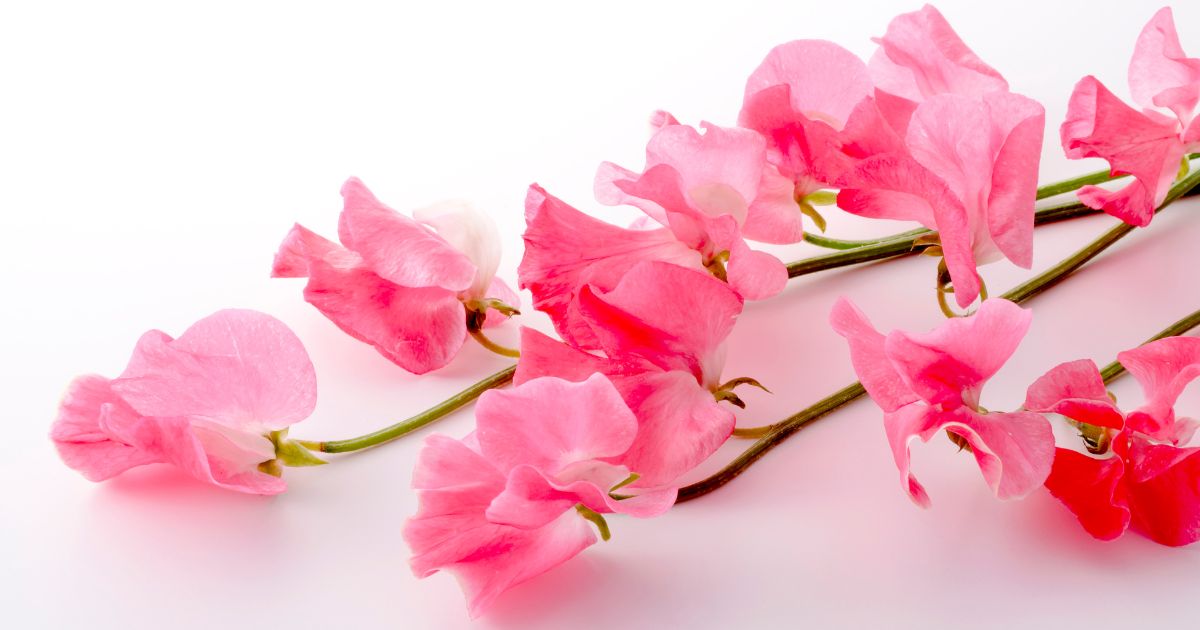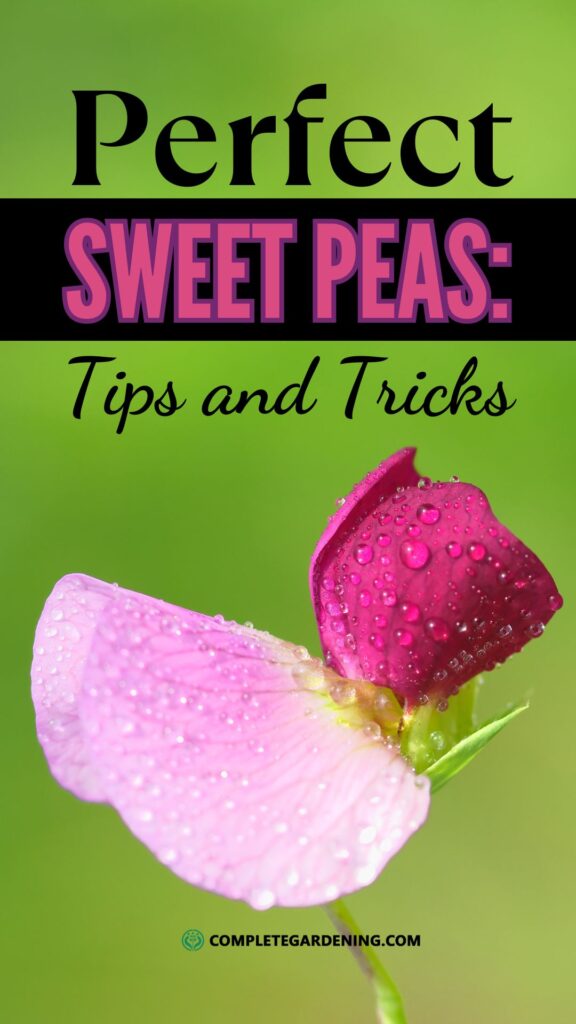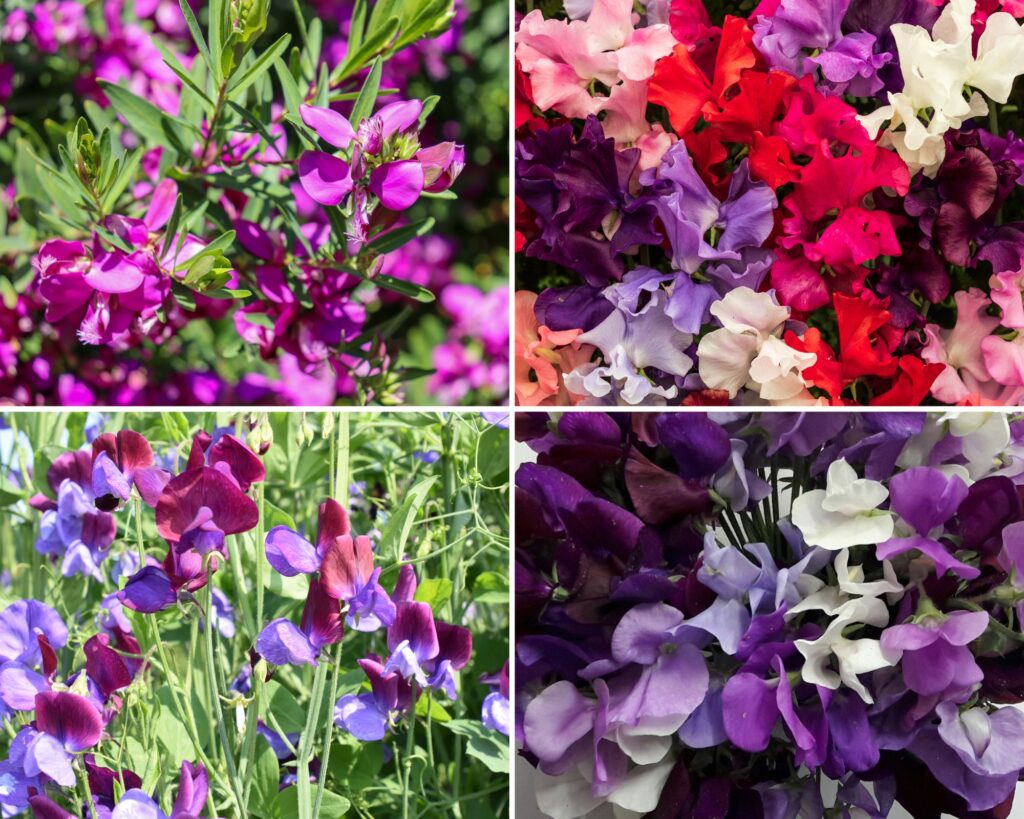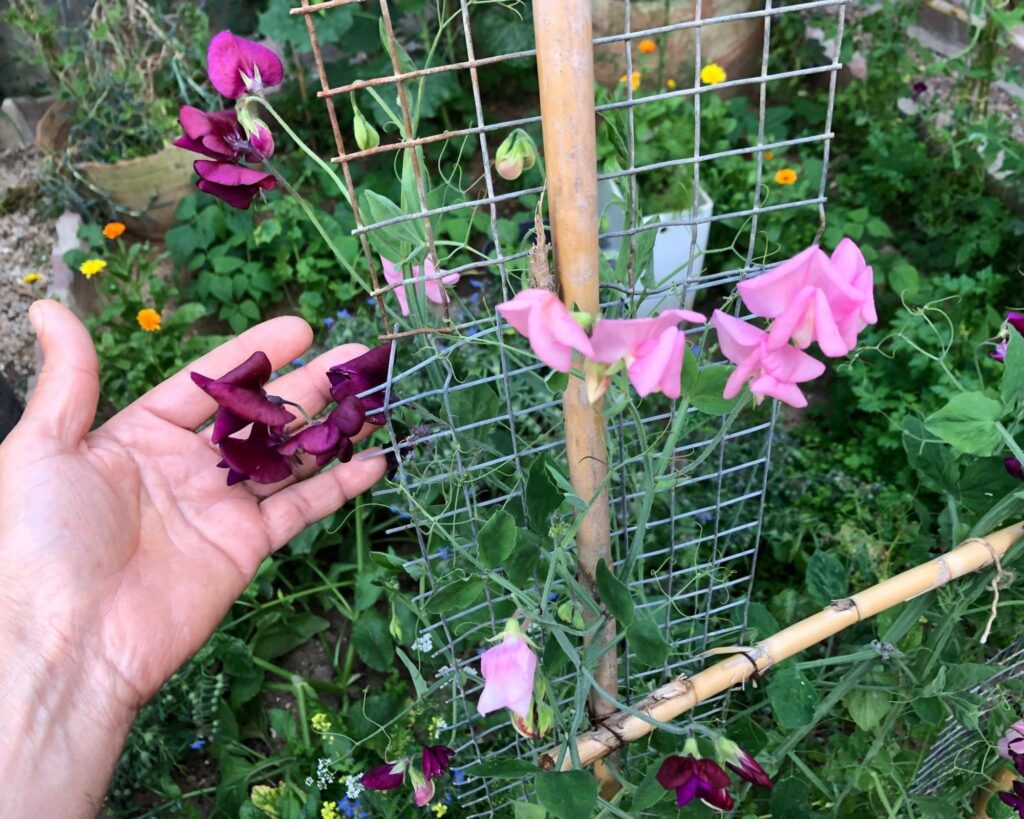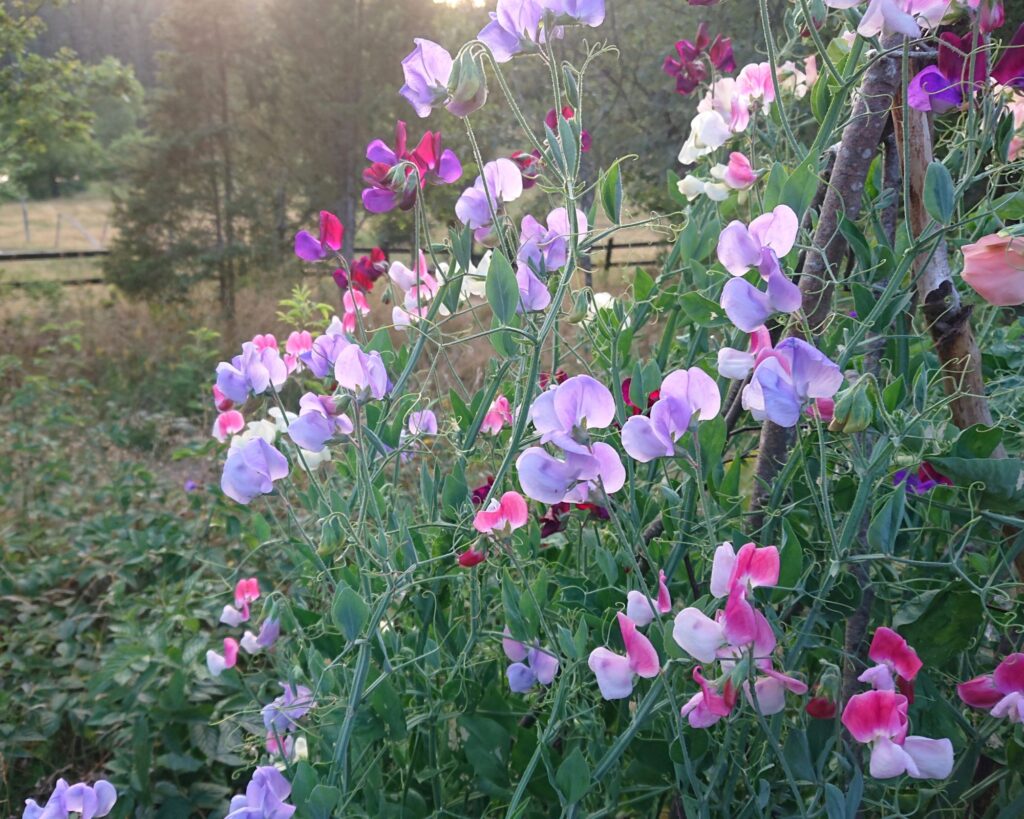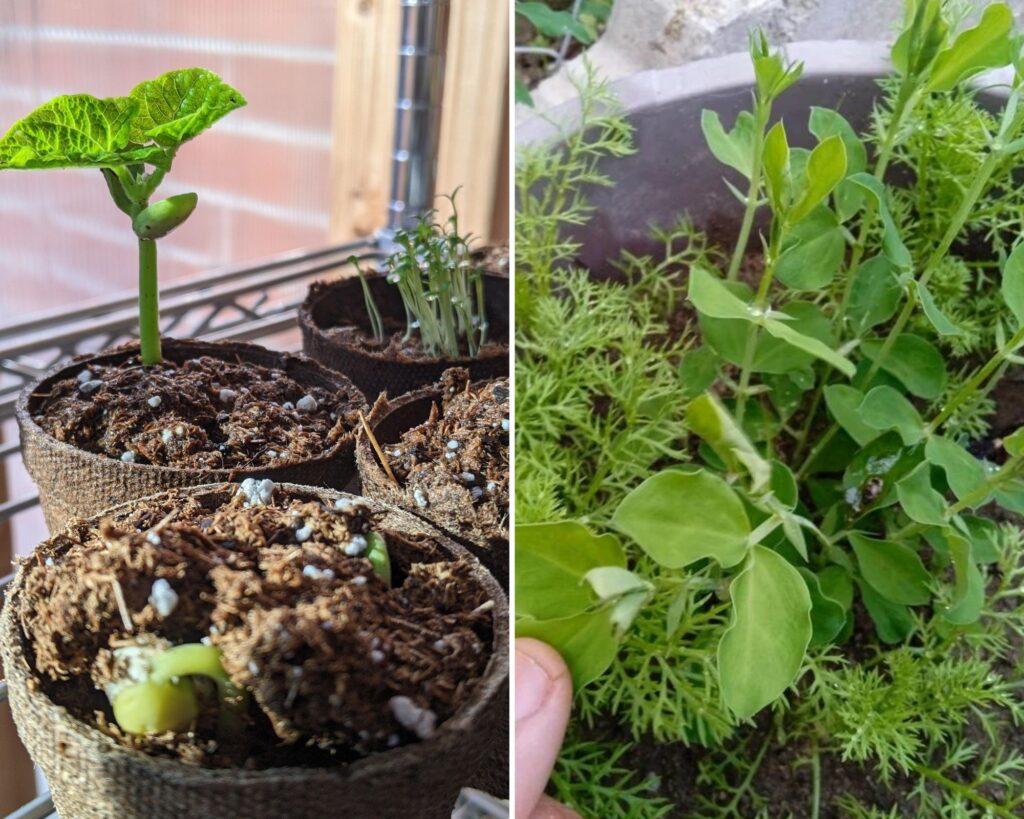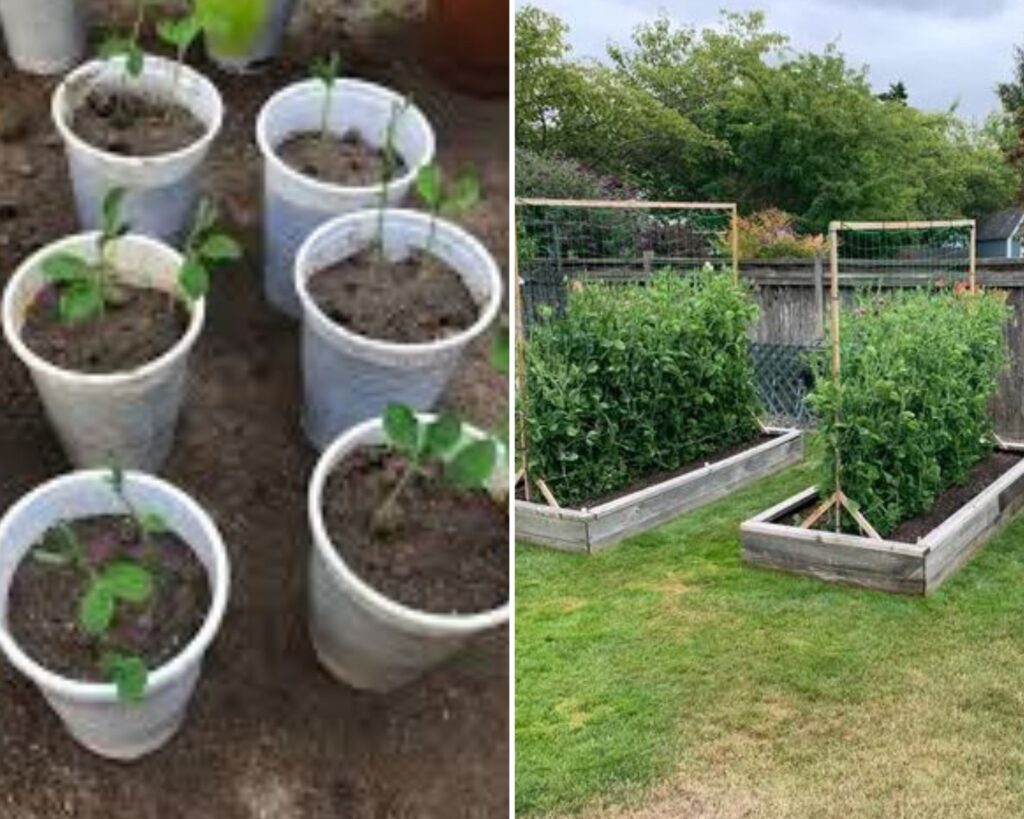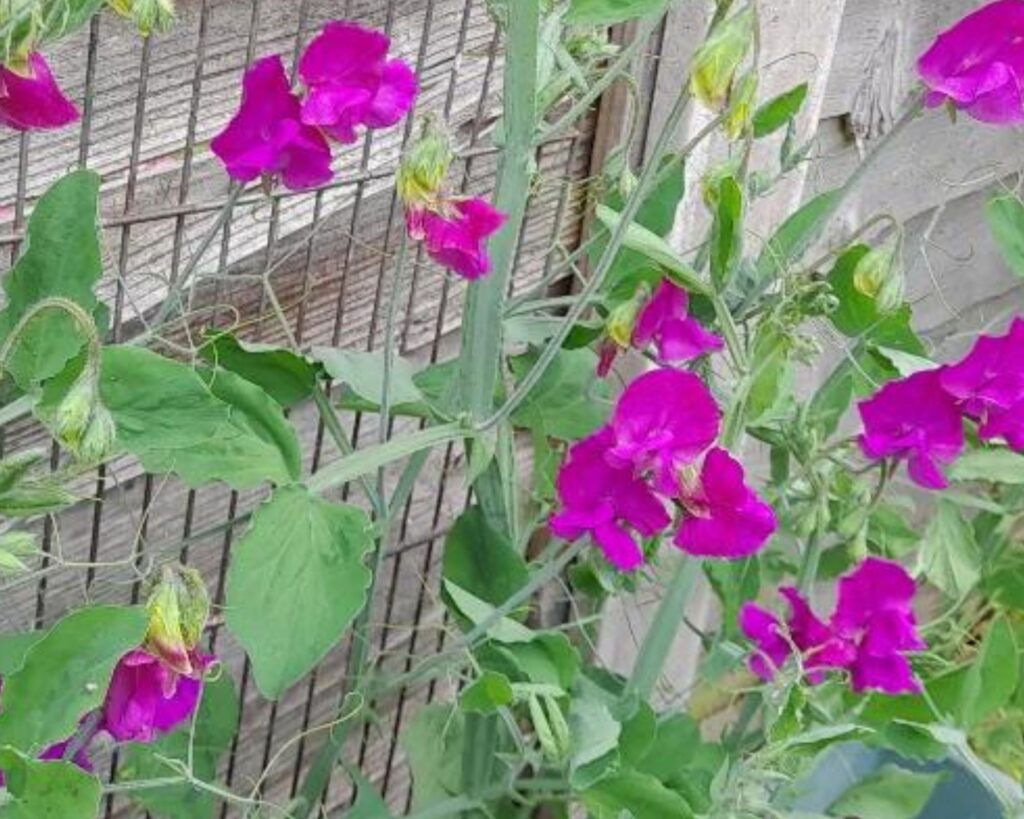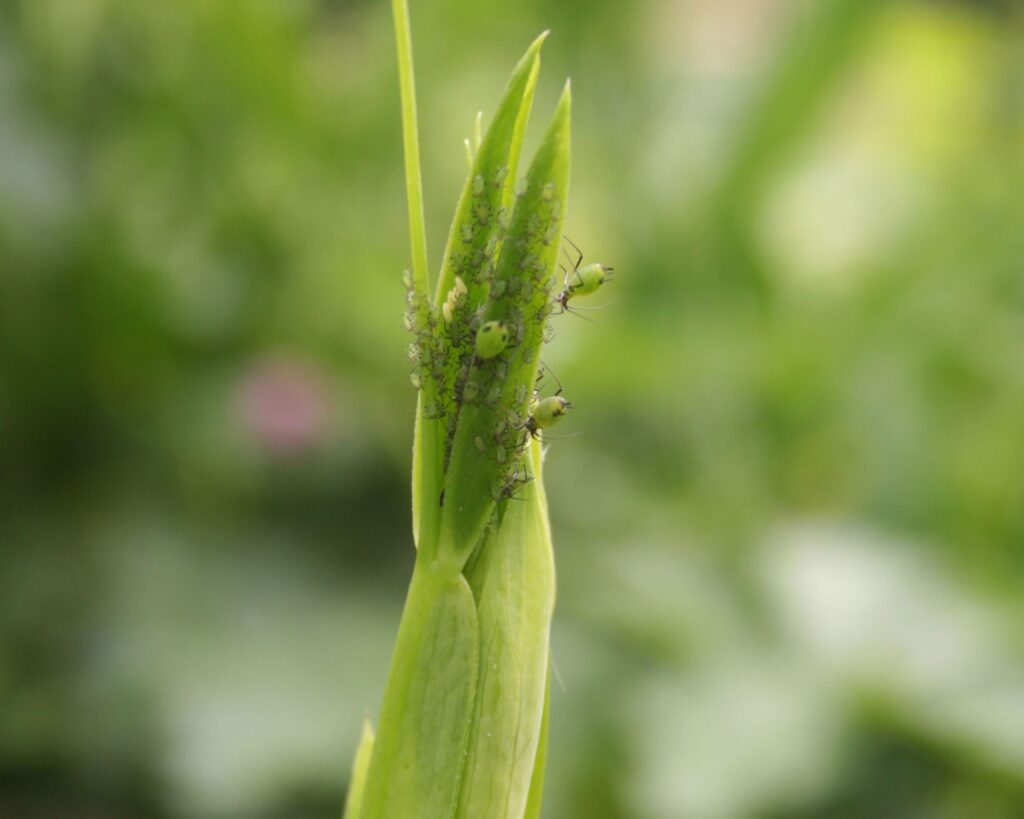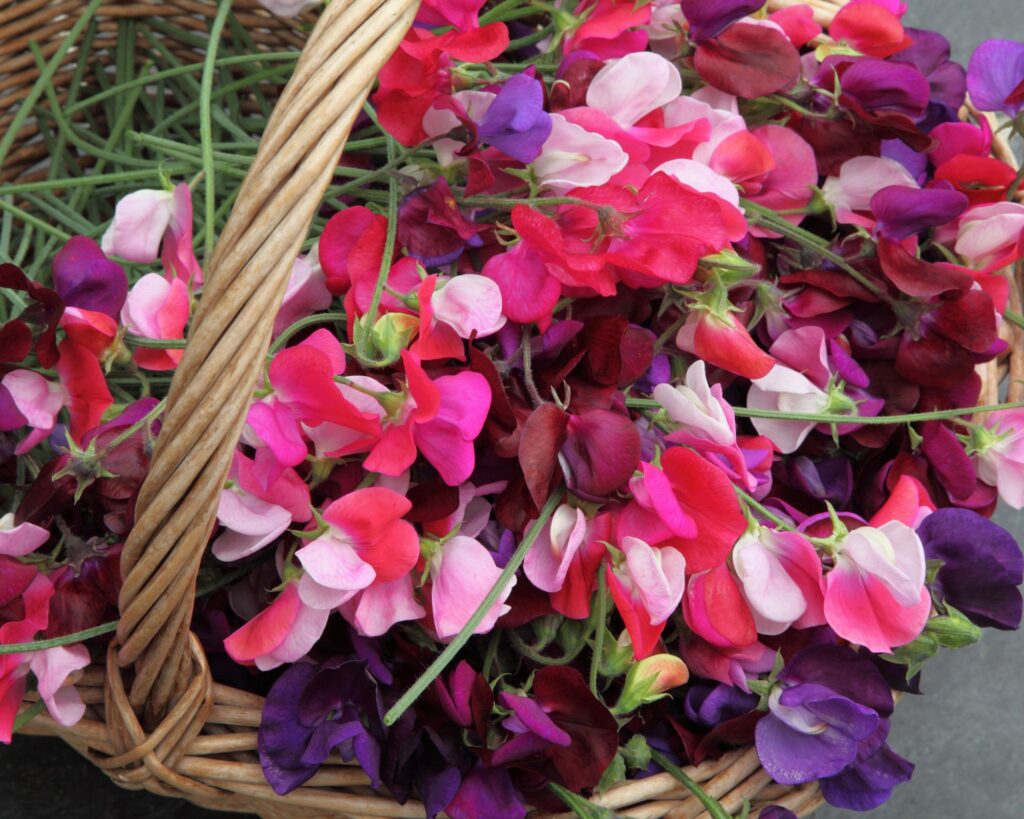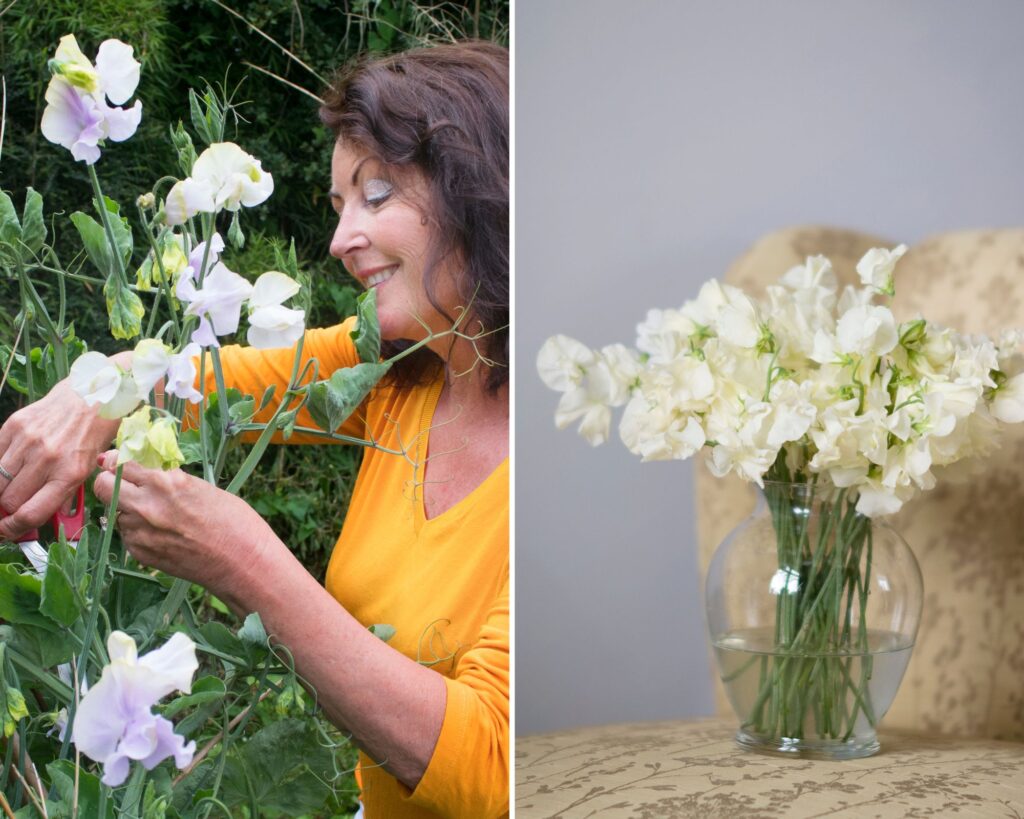Struggling to find the perfect flowers that are easy to grow yet stunningly beautiful? Look no further than sweet peas. These charming blooms not only offer a dazzling array of colors but also fill your garden with an enchanting fragrance.
Whether you’re a beginner worried about your green thumb or an experienced gardener seeking effortless beauty, sweet peas are your answer. By following some simple steps, you can transform your garden into a haven of vibrant, sweet-smelling flowers.
Ready to discover the secret to a breathtaking garden? Let’s dive in and learn how to grow sweet peas like a pro.
Sweet Pea Fundamentals
Sweet peas, known for their vibrant colors and delightful fragrance, have a rich history and come in many varieties. They are a favorite for gardeners seeking to add beauty and charm to their green spaces.
What Are Sweet Peas?
Sweet peas (Lathyrus odoratus) are climbing plants that produce fragrant, colorful flowers. They can grow up to 6-8 feet tall if supported properly. They thrive in cooler weather and are usually planted in late winter or early spring. Sweet peas prefer well-drained soil and full sun to partial shade. They are popular in gardens and are often used as cut flowers due to their strong scent and appealing appearance.
History and Origin
Sweet peas originated from the Mediterranean region, particularly Sicily, Southern Italy, and the Aegean Islands. They were first cultivated in the 17th century. A Sicilian monk, Father Francis Cupani, is credited with discovering and disseminating them. By the 19th century, sweet peas became highly popular in England. The Victorian era saw a surge in hybridization, leading to the diverse varieties we enjoy today.
Types of Sweet Peas
There are several types, each with unique characteristics. Grandiflora sweet peas feature large, ruffled blooms and a strong fragrance. Spencer types are known for their varied colors and long stems, making them ideal for bouquets. Old-fashioned sweet peas, also called heirloom, possess an intense scent but produce smaller flowers. Dwarf sweet peas, like the Bijou variety, are perfect for pots and small gardens due to their compact growth.
Getting Started with Sweet Peas
To grow sweet peas successfully, you’ll need to select the right varieties, gather necessary tools and supplies, and understand how your local climate influences their growth.
Choosing the Right Varieties
Choosing the right sweet pea variety depends on your space and needs. Dwarf varieties grow well in containers or small gardens, while tall varieties need support like trellises. Popular varieties include ‘Old Spice’ for fragrance, and ‘Mammoth’ for large flowers.
Check the plant labels for bloom times and height. Mixing different varieties can provide a succession of blooms and add visual interest to your garden.
Required Tools and Supplies
Start with quality tools for planting and maintaining sweet peas. You’ll need the following:
- Garden trowel: For digging holes.
- Trellis or support structures: Essential for tall varieties.
- Organic compost: Improves soil fertility.
- Seeds: High-quality seeds ensure better growth.
- Watering can: For gentle watering.
Don’t forget mulch to retain moisture and reduce weeds. Having these tools on hand makes planting and care more efficient.
Understanding Your Climate
Climate plays a crucial role in sweet pea cultivation. Sweet peas thrive in cooler temperatures. If you live in a warm climate, plant them in late autumn or early winter. In cooler areas, spring planting is ideal.
Monitor soil temperature; sweet peas prefer soils around 50-60°F. Provide shade if temperatures exceed their range to prevent wilting. Tailoring planting times and methods to your climate ensures healthy growth and a successful bloom.
Planting Sweet Peas
To successfully plant sweet peas, consider factors like where to seed, how to prepare the soil, and effective sowing techniques.
Seeding Indoors vs. Outdoors
When deciding between seeding indoors or outdoors, think about your climate. Indoor seeding ensures better germination rates, especially in colder regions. Start seeds in pots 6-8 weeks before the last frost.
Outdoor seeding is easier if you live in a warmer climate. Sow seeds directly into the garden when the soil warms up. By using both methods, you can extend the blooming period.
Soil Preparation
Sweet peas thrive in nutrient-rich soil with good drainage. Test your garden soil and amend it as necessary. Aim for a pH of 6.0 to 7.5. Add compost or well-rotted manure to boost nutrients.
Well-draining soil is crucial. If your soil is heavy clay, incorporate sand or fine gravel to improve drainage.
Sowing Techniques
When sowing, ensure each seed has enough space. Indoor seeds should be spaced about 2 inches apart in seed trays. Use a light seed-starting mix for optimal growth.
For outdoor sowing, plant seeds 1-2 inches deep and 3-4 inches apart. This spacing helps prevent overcrowding. Water the seeds well but avoid waterlogging the soil.
Caring for Your Sweet Peas
Sweet peas require regular watering and feeding, sturdy support structures, and vigilance against common pests and diseases to thrive and produce beautiful blooms.
Watering and Feeding
Sweet peas prefer moist soil, so ensure they get about 1 inch of water per week. Water deeply to encourage strong root growth, especially during dry spells. Morning is the best time to water your plants to avoid fungal issues.
Use a balanced liquid fertilizer every two weeks during the growing season. An option is a 10-10-10 formula. For organic growers, well-rotted manure or compost tea works well. Regular feeding boosts flower production and health.
Staking and Support
Sweet peas are climbing plants and need support to grow upright. Use bamboo canes, trellises, or netting. Install support structures early to avoid damaging their root systems later on.
Tie the stems gently to the support with soft garden ties or twine. This prevents breakage and directs the plant’s growth. Space the ties evenly along the stem to distribute the plant’s weight effectively.
Dealing with Pests and Diseases
Common pests include aphids and slugs. Aphids can be controlled with insecticidal soap or neem oil. Introduce beneficial insects like ladybugs for natural pest control. For slugs, you can use slug pellets or take a natural route with crushed eggshells around the plant base.
Watch out for diseases like powdery mildew and fusarium wilt. Remove affected leaves and avoid overhead watering to prevent these issues. Ensure good air circulation around the plants by spacing them properly.
Harvesting and Enjoying Your Sweet Peas
Timing and proper care are key factors in making the most of your sweet pea harvest. With a little attention, you’ll be able to enjoy these beautiful flowers both in your garden and as cut flowers in your home.
Optimal Harvest Time
Sweet peas are best harvested when the blooms are mostly open, but before they start to fade. Early morning is the ideal time to cut sweet peas, as they’re well-hydrated from the night’s dew.
To maximize bloom production, pick flowers regularly. Sweet peas thrive on being harvested and will produce more flowers if you keep cutting. Use sharp scissors or pruning shears to avoid damaging the plant.
Look for blooms that have just opened for the freshest cuts. These flowers will last the longest in a vase.
Cut Flower Care
To ensure your sweet pea cut flowers last as long as possible, place the stems in water immediately after cutting. Remove any leaves that will be below the waterline to prevent bacterial growth.
Change the water daily to keep it fresh and extend the life of the flowers. Keeping the arrangement in a cool location, away from direct sunlight and drafts, will also help maintain their beauty.
For an extra boost, add a small amount of sugar or floral preservative to the water. This can help nourish the flowers and prolong their freshness.
Growing sweet peas can be a rewarding and enjoyable gardening experience. With the right preparation, care, and attention, you can enjoy a bountiful display of these beautiful and fragrant flowers. Whether you’re growing them for their stunning visual appeal or their delightful scent, sweet peas are sure to bring joy to any garden.
